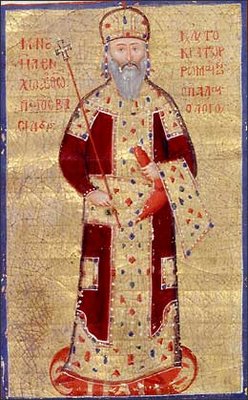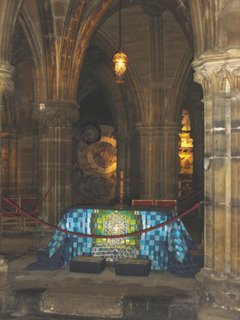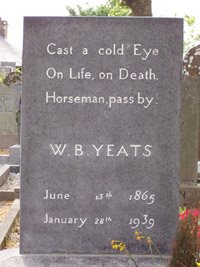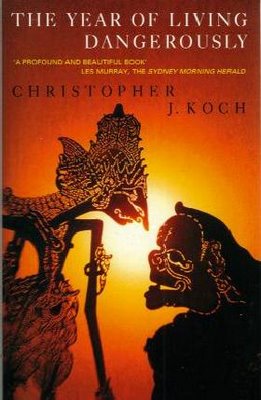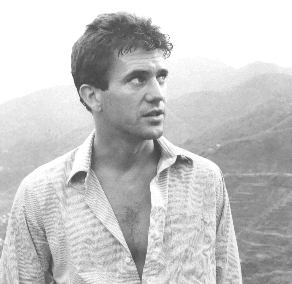One of the online articles of
Fr. James Alison's that especially touched me was
Unbinding the Gay Conscience, given as a talk in 2002. Though it's written particularly for gays, I think it can be useful to others as well, for many of us find ourselves in "double-binds" ... the double-bind of feeling that one can't both be themselves and also be loved is one I particularly struggle with. Below are some bits snipped from the article, but to do it justice, you should read the whole thing ... it's worth it ....
****************************
Some of you may have known Benjamin O’Sullivan, a Benedictine monk of Ampleforth Abbey who killed himself early in 1996 .... I felt that his death was brought about because this extremely attractive, apparently self-confident, effervescent young man had been unable to stand up as an ordinary gay man to the voice of the lynch mob. And the reason was because he was bound in his conscience ... the person caught in the trap looks at the world through fear-coloured spectacles, and fear darkens rather than illumines what it projects. But this gives a hint of what I mean by a bound conscience: the sort of person who can’t stand up and be what they are ...
Now I would like to examine the binding and the unbinding. What does it look like? The first step is to look at what being ‘bound’ means. A bound conscience is one which cannot go this way or that, forward or backwards, is paralysed, scandalized. In that sense it is a form of living death, and those afflicted by it are living dead, and many of us are or have been such people. For example: we are familiar with the notion of a ‘double-bind’ or a ‘Catch 22 situation’. A bound conscience is a sense of being formed by a double-bind or a series of double binds ....
What I would like to suggest is that in all these cases we are dealing with a self that has been formed by being given contradictory desires without being given any ability to discern where they might appropriately be applied. In other words, two instructions are received as on the same level as each other, pointing in two different directions at once, and the result is paralysis. This is what σκάνδαλον - skandalon - refers to in the New Testament - scandal, or stumbling block. Someone who is scandalised is someone who is paralysed into an inability to move. And the undoing of σκάνδαλα - skandala – which means the unbinding of double binds that do not allow people to be, is what the Gospel is supposed to be about.
I want to make it quite clear that we are dealing with something very basic and central to the Gospel here. It is perfectly possible to present the Gospel in such a way that it is a sort of double-bind. Any sort of presentation of the Christian faith which says, ‘I love you but I do not love you’, or ‘I don’t love you as you are, but if you become someone different I will love you’, is in fact preaching a double-bind, a stumbling block, a pathway to paralysis.
Let’s imagine the conversation between a false god and the self:
False god: I want to love you, but I can’t love you as you are, because you are sinful and objectively disordered.
Self: Well, what then must I do to be loved?
False god: You must become someone different.
Self: I’m up for it, show me how.
False god: Love isn’t something that can be earned, it just is.
Self: Well then how do I become the sort of person who can be loved?
False god: If I were you I would start somewhere else.
Self: That’s a great help. How do I start somewhere else?
False god: You can’t, because even starting off for somewhere else starts from you, and you can’t be loved.
Self: Well if I can’t start off from somewhere else, and I can’t start off from where I am, what can I do?
False god: Give up on the love thing; just obey and be paralysed.
That’s how powerful it is to receive our sense of self, our identity, our desire, in imitation of, through the regard of, eyes which give us a mixed message, a double bind.
Now if the Gospel means anything at all it means that the Good News about God is unambivalent, that there are no ‘if’s and ‘but’s in God - God’s love is unconditional. And this means, above all, that there are no double-binds in God. That God desires that our desire should flow free, life-giving and untrammeled, because it is in that flow of desire that we are called into being.
Well, if that is the case, imagine then what might be a conversation between the Unambivalently loving God and the self:
Unambivalently loving God: I love you.
Self: but I’m full of shit, how can you love me?
Unambivalently loving God: I love you.
Self: but you can’t love me, I’m part of all this muck.
Unambivalently loving God: it’s you that I love.
Self: how can it be me that you love when I’ve been involved in bad relationships, dark rooms, machinations against other people?
Unambivalently loving God: it’s you that I love.
Self: But ...
Unambivalently loving God: it’s you that I love.
Self: But ...
Unambivalently loving God: it’s you that I love.
Self: OK then, so are you just going to leave me in the shit?
Unambivalently loving God: Because I love you, you are relaxing into my love and you will find yourself becoming loveable, indeed becoming someone that you will scarcely recognise.
Self: Hadn’t I better do something to get all ready for this becoming loveable?
Unambivalently loving God: Only if you haven’t yet got it that it’s I who do the work and you who get to shine. Because I love you, you are relaxing into being loved and will find yourself doing loveable things because you are loved.
Self: I think I could go along with this.
Or to put it in a nutshell, when faced with the standard Irish joke about ,’How do I get to Dublin?’, and being told ‘If I were you I wouldn’t start from here’, the Gospel response, that is to say the regard of Christ, tells us: ‘I will come with you starting from where you are’ ....
I would like to dwell a little more on the effects on us of this regard, the one which looks at us and says, ‘I love you, and as you discover yourself loved you will find yourself becoming something else’. I want to say something apparently rather banal here, but I think it is rather important. I think that we would be wise to send the word ‘love’ to the laundry and use the word ‘like’ instead. I say this for the following reason. You have probably met people, as I have, who tell us that they love gay people, and that is why they are so keen to change us. In other words their ‘love’ does not include the word ‘like’. It means something like: ‘I feel that in obedience to God’s love for sinners I must stop you being who you are’.
But in fact the word ‘like’ is rather more difficult to twist into a lie than the word ‘love’, because we know when someone likes us. We can tell because they enjoy being with us, alongside us, want to share our time and company. Well, what I would like to suggest is that if our understanding of love does not include liking, or at least being prepared to learn to like, then there’s a good chance that we’re talking about the sort of love that can slip a double-bind over us, that is really saying to us, ‘My love for you means that I will like you if you become someone else’.
Well, it seems to me that the doctrine of the incarnation of Our Lord, the image of God coming among us as the likeness of humans8, is a strong statement that the divine regard is one of liking us, here and now, as we are. Glad to be with us. And this means that the one who looks at us with love is not just looking at us with a penetrating and inscrutable gaze of utter otherness, but is looking at us with the delight of one who enjoys our company, who wants to be one with us, to share in something with us. Sure, as we learn to relax into that being loved we are going to find that we are quite different from what we thought we were, and that our patterns of desire will become quite different, which is what it means to find that the Holy Spirit has come to dwell in us in and through the reformation of our desire. But the regard does not first knock down so as then to build up, as we so often imagine it, rather as though Jesus was a sergeant-major whose job it is to give hell to the recruits and make them feel awful so that later, after they’ve lost their identities, they’ll start to feel good new identities as soldiers, and then they’ll discover he has a heart of gold.
No, our faith is that the eyes of God that are in Christ, and thus the divine regard through which we can receive new being, are eyes that like us, from alongside, at the same level as us. Which means, do not control us, do not try to ‘know better than us’ who we are, but want to participate in a discovery with us of who we are to become ....
****************************
There's more to the article, so read it all if you have the time and the interest (
link).
Read more of Fr. Alison's work at
James Alison Theology .... there's also an article on Pentecost by him at the Tablet -
The Wild Ride.



















